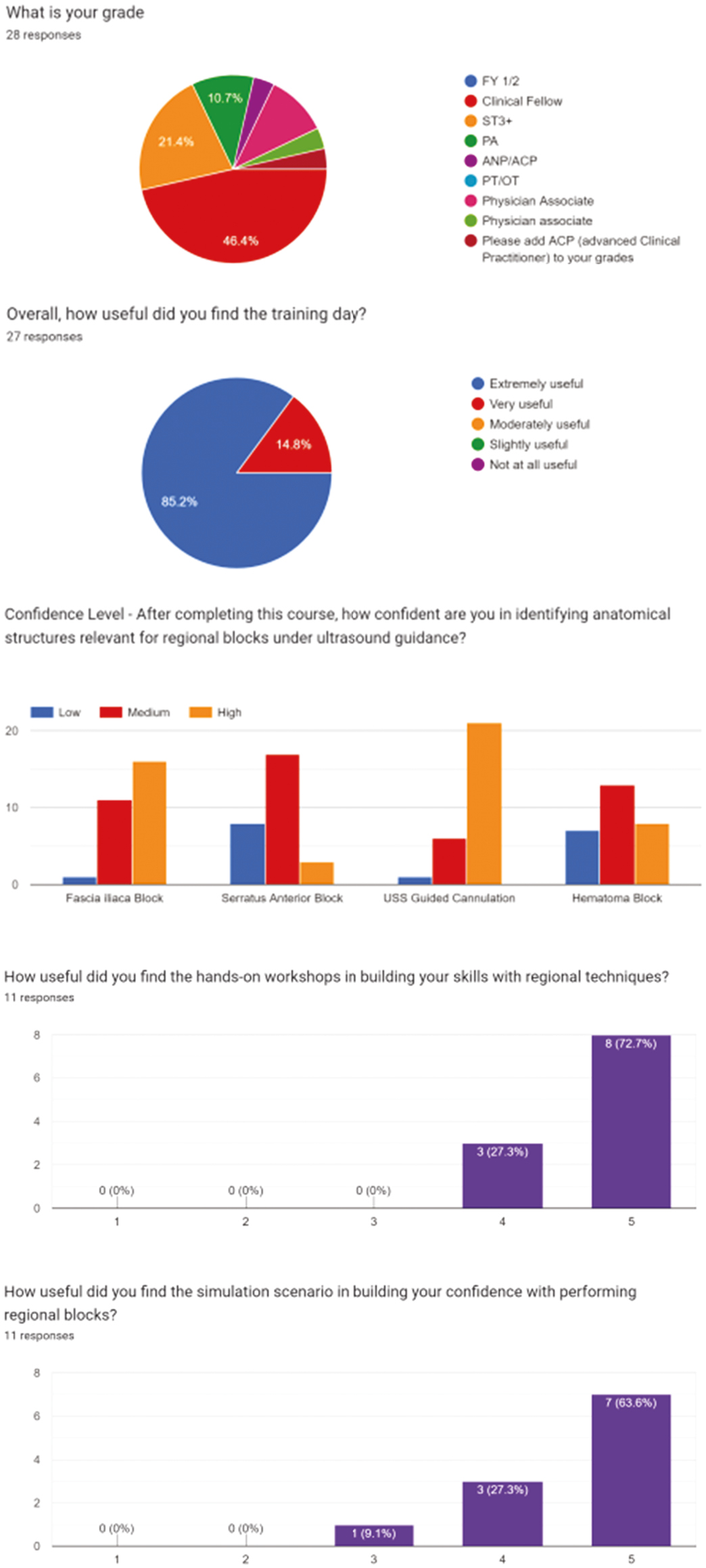
Regional anaesthesia plays an important role in modern practice, offering numerous advantages such as reduced opioid use and improved postoperative pain management [1]. However, ensuring a high level of competency amongst healthcare professionals in this field is essential to maximise its benefits and minimise risks. This abstract presents a regional block course for the Emergency Department (ED) that has been running successfully at Guy’s and St Thomas’ Hospital (GSTT).
The regional blocks course at GSTT was designed to meet the growing demand for training in regional anaesthesia techniques in the Emergency Department to provide optimal pain management in acute fractures(2). The main target group were doctors above Foundation year 2, Physician Associates and Advanced Nurse Practitioners. The course offers comprehensive learning that tailors to all professional levels. It provides the knowledge base and expertise to be competent in the desired skills(2). The course includes both didactic sessions and hands-on training for a variety of healthcare professionals at different levels of training.
Key components of the course include:
● Didactic Sessions: The course begins with in-depth lectures covering anatomy, pharmacology, and the latest advances in regional anaesthesia. These sessions lay a strong theoretical foundation for participants, as well as allowing participants to engage in technical discussions with subject matter experts.
● Practical Workshops: A significant portion of the course is dedicated to practical workshops, where participants gain hands-on experience in ultrasound-guided regional anaesthesia techniques while being guided by experts in the field. This includes nerve identification (fascia iliaca, serratus anterior and nerves of the wrist/hand), needle placement, and patient positioning and assessment.
● Simulation Scenarios: To enhance skills and build confidence, the course integrates high-fidelity simulation scenarios. These simulations replicate real clinical situations, allowing participants to practice their skills in a safe and controlled environment.
The competence and confidence of participants completing the course are high in regional block techniques, as assessed through post-course evaluations (Figure 1-A62). In conclusion, the regional block course at GSTT has been popular among healthcare professionals, participants enjoy the course, make use of their learning and recommend it to others.


By combining didactic sessions, practical workshops and simulated scenarios, this program has had a positive impact on the clinician’s competency and confidence. This abstract highlights the importance of tailored simulated education in improving healthcare practices and patient care, especially in respect to acute pain management.
Authors confirm that all relevant ethical standards for research conduct and dissemination have been met. The submitting author confirms that relevant ethical approval was granted, if applicable.
1. Chitnis SS, Tang R, Mariano ER. The role of regional analgesia in personalized postoperative pain management. Korean Journal of Anesthesiology [Internet]. 2020 [cited 2023 Oct 19];73(5):363. Available from: /pmc/articles/PMC7533178/.
2. Pawa A, El-Boghdadly K. Regional anesthesia by nonanesthesiologists. Current Opinion in Anesthesiology [Internet]. 2018 [cited 2023 Oct 19];31(5):586–592. Available from: https://www.researchgate.net/publication/326384751_Regional_anesthesia_by_nonanesthesiologists.